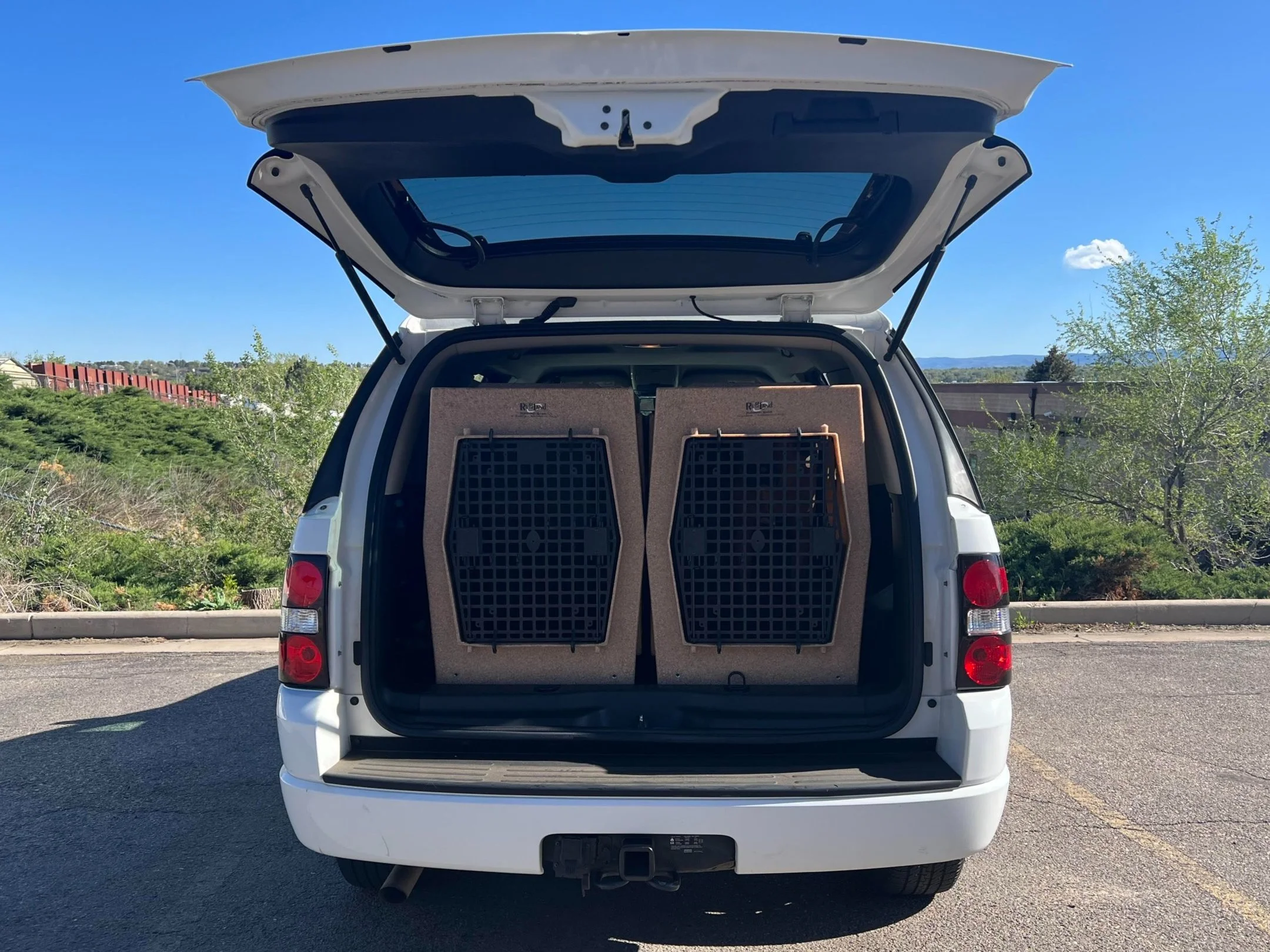Benefits of Crate Training
Crate training can be an essential part of a dog’s development and can offer major benefits for both the dog and the owner when done correctly. The crate should be a positive, comfortable space. I do use crates for my personal dogs as well as my training dogs. Improper use can cause anxiety or resistance, I’d be happy to help clients who have questions introducing their dog to a crate before enrolling in my board and train programs.
Here's a breakdown of why crate training is important:
1. Provides a Safe, Personal Space
A crate provides a safe environment, giving your dog a secure place to relax, sleep, or retreat when overwhelmed. They are great for multi-dog households while integrating a new pet into your family, separating dogs during feeding time or when giving high value chews/treats.
2. Aids in Housebreaking
Crate training is one of the most effective tools for potty training:
Most of the time, dogs will instinctively avoid having accidents in their sleeping area
Crate training helps teach bladder and bowel control through scheduled breaks
3. Eases Travel and Vet Visits
Crate-trained dogs are more comfortable in these scenarios:
When traveling in your vehicle, crates encourage calm behavior and allows for fewer distractions to the driver.
-Bonus: If you enjoy taking your dog on adventures outdoors, it helps reduce dirt and dog hair in unwanted places in the vehicle, and makes clean up much easier!
Some brands of crates protect your pet from injury in the unfortunate event of a car accident, and prevents them from fleeing the scene
For use in hotels, Airbnb’s or even on camping trips to keep your dog out of mischief and to feel relaxed in a familiar space when visiting brand new environments
If hospitalized at veterinary offices, and when they return home to be compliant with “crate rest”/restricted physical activity after a surgical procedure
If boarding facilities are needed, your dog will already be comfortable with being confined in a crate. This reduces stress and makes these situations smoother
In the event of evacuations, such as the case of fire or natural disasters, crates are often utilized by rescue workers to temporarily transport and house pets safely.
4. Prevents Destructive Behavior
When unsupervised, especially during the puppy phase, a crate keeps your dog from:
Chewing up or destroying furniture, shoes, doors or other household items
Digging up the back yard or landscaping, fence fighting/barrier aggression between dogs in adjacent yards, escaping and running at large
Getting into dangerous substances or ingesting trash
Hurting themselves or other animals in the home
***NOTE: If your dog is likely to chew up items, I recommend that you DO NOT leave blankets, bedding, or any toys in the crate, because they can be destroyed and ingested. This can be very dangerous and may result in surgical removal of the ingested items.
5. Promotes Better Sleep Routines
Crating at night helps establish a consistent bedtime, prevents midnight wandering, and gives your dog a cue that it’s time to rest.
6. Supports Training and Structure
A crate adds structure to your dog’s day and helps teach:
Patience
Promotes calm behaviors when you are away
Creates boundaries and provides a safe space when you simply cannot supervise your dog and don’t want them underfoot or getting into trouble; such as while cooking or eating, welcoming guests over, working remotely, or while having maintenance workers in your home
The type of crate you choose matters.
Chili sleeps safely in a KBC brand kennel.
Not all crates are created equally for safety. Yes, wire crates are often more affordable, lighter weight, collapsible and easier to transport; however, I recommend using a hard plastic or escape proof crate over a wire kennel. Dogs who are not crate trained, or suffer from anxiety (think thunderstorms or during a firework show) might be able to escape from wire kennels or may injure themselves while trying to break free from them. Also, wire crates are NOT created with safety in mind in the event of a motor vehicle accident.
Some of my favorite crate brands that I recommend for use in the home and vehicle are: KBC Kennels, Ruffland Kennels, Dakota Kennels, Gunner Kennels or something similar.
I will use wire crates for my dog in places where I want my dog to feel included, but also put away in a secure place while I am still home and able to supervise them. I use a hard plastic or reinforced kennel for when I leave a pet unattended, and when crated while riding in my car.




